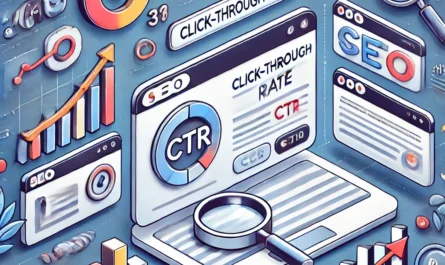Digital marketing has revolutionized the way businesses reach their audience, providing tools that can transform a company’s visibility and engagement in a matter of months. But while the possibilities are vast, they also present several challenges. Every marketer, whether seasoned or new to the game, has likely faced the difficulty of navigating through this complex world. Success in digital marketing is not guaranteed, and the learning curve is often steep. Many brands fall into the trap of making common mistakes that hold back their potential, and this can be costly both in terms of time and money.
Let’s dive into eight of the most common digital marketing mistakes businesses make and how to avoid them.
The Importance of Avoiding Digital Marketing Mistakes
Digital marketing mistakes may seem minor at first glance, but they can have significant consequences in terms of visibility, conversion rates, and ROI (Return on Investment). When marketing efforts go unnoticed or are poorly executed, businesses miss out on crucial opportunities to connect with their audience. In today’s fast-paced digital world, where trends change overnight, it’s vital for marketers to stay vigilant and avoid errors that could cost them leads, sales, and their brand’s reputation.
Recognizing these errors is the first step toward a more effective strategy. Being proactive about avoiding them ensures that your business is always headed in the right direction.
Mistake: Ignoring SEO Fundamentals
SEO (Search Engine Optimization) remains one of the most important aspects of digital marketing. However, many businesses, especially startups or those that are more focused on aesthetics than technical elements, often ignore the foundational SEO practices. They may think that paying for ads or posting on social media is enough to drive traffic. This is a critical misstep.
SEO determines your site’s ranking on search engines like Google. Failing to optimize your website for SEO means missing out on organic traffic, which accounts for a significant portion of online engagement. Poor keyword usage, neglecting meta descriptions, and not optimizing for local search are common SEO mistakes that can bury your site in search results.
How to Avoid Ignoring SEO Fundamentals
To fix SEO-related errors, you should first conduct a thorough SEO audit of your website. This includes checking the speed of your site, ensuring mobile compatibility, and optimizing your content with relevant keywords that are naturally incorporated. Keyword research is essential—knowing what your audience is searching for helps you create content that answers their questions and meets their needs. Don’t overlook on-page SEO elements such as title tags, headers, and image alt text, as they play crucial roles in how search engines categorize and rank your pages.
Additionally, off-page SEO strategies, such as building backlinks from reputable sites, are equally important. Regularly updating and reviewing your SEO practices will keep your site in top shape for long-term success.
Mistake: Neglecting Mobile Optimization
With mobile users now exceeding desktop users globally, failing to optimize for mobile is a grave mistake. Websites that aren’t mobile-friendly frustrate users, leading to higher bounce rates, lower conversions, and a damaged brand reputation. As Google uses mobile-first indexing, neglecting mobile optimization can also negatively affect your search rankings.
Despite these facts, many businesses still design their websites primarily for desktop, assuming that mobile optimization is secondary or unnecessary. This oversight can drastically reduce the effectiveness of even the most well-thought-out digital marketing campaigns.
How to Fix Mobile Optimization Issues
Ensuring that your website is mobile-responsive should be one of your top priorities. A mobile-responsive design automatically adjusts the layout based on the device being used, offering a seamless user experience whether accessed via phone, tablet, or computer. Test your website regularly on different devices to identify potential issues with load time, button size, or navigation. Employ Google’s Mobile-Friendly Test tool to evaluate your site and make necessary adjustments.
Moreover, consider adopting Accelerated Mobile Pages (AMP) to enhance loading speeds, as slow sites drive users away. Always prioritize a clean, simple design that is easy to navigate on smaller screens.
Mistake: Inconsistent Branding
A brand’s identity is its promise to its customers. It communicates who you are, what you offer, and what makes your business stand out. Inconsistent branding—where colors, tone of voice, messaging, or even logos differ across platforms—can confuse your audience and weaken your brand recognition. This can be especially detrimental in a crowded digital landscape, where consistency is key to building trust.
Unfortunately, businesses often fall into the trap of making tweaks to suit different audiences on separate platforms, which leads to a disjointed brand image.
How to Establish Consistent Branding
To maintain consistency, develop a clear brand guideline that covers your visual elements, tone of voice, and messaging. Stick to this guide across all your digital platforms, from your website to social media, ensuring that your brand is instantly recognizable no matter where your audience interacts with it.
It’s also crucial to educate your team on these guidelines so that every piece of content or customer interaction aligns with your brand’s image. A unified brand presence strengthens customer loyalty and can positively impact conversion rates.
Mistake: Overlooking Analytics
Many marketers focus on content creation and ad campaigns but overlook the importance of analyzing data to assess the performance of their efforts. Without tracking analytics, you’ll never know what’s working and what’s not. This results in wasted resources on strategies that may not even resonate with your audience.
Overlooking metrics like conversion rates, click-through rates (CTR), or bounce rates means missing out on valuable insights that could improve future campaigns.
How to Use Analytics Effectively
Start by setting up tracking tools such as Google Analytics or similar platforms. Make a habit of regularly reviewing data related to your campaigns, website performance, and customer interactions. Analyzing this data helps you identify which strategies are effective and where improvements are needed. Conversion rate optimization (CRO) should be part of your digital marketing plan, ensuring that you refine your approach based on hard evidence rather than assumptions.
By leveraging analytics effectively, you can make informed decisions and continuously fine-tune your strategy for better results.
Mistake: Focusing Solely on Paid Ads
Paid advertising can deliver fast results, but relying on it as your sole marketing strategy can be a mistake. Paid ads tend to provide temporary boosts, but the moment your budget runs out, so does your traffic. A robust marketing plan should incorporate both paid and organic methods to maintain a steady flow of leads over the long term.
You Can Also Read: How Digital Marketing Helped Us Triple Our Sales in 6 Months
How to Balance Paid and Organic Strategies
A successful marketing strategy balances short-term gains with long-term efforts. While paid ads are great for generating immediate traffic, organic strategies such as content marketing, SEO, and social media engagement help build sustainable brand visibility. Diversify your approach by investing in both avenues, and remember that organic growth, although slower, often leads to higher customer trust and loyalty.
Building a blog with informative and keyword-optimized content, nurturing relationships through social media, and consistently improving your SEO will complement your paid efforts and ensure long-lasting results.



